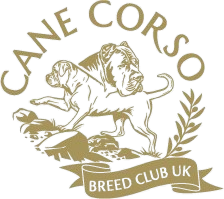Understanding Cherry Eye in Cane Corso Dogs: Causes, Treatment, and Care
Introduction to Cane Corso and Cherry Eye Prevalence
The Cane Corso, a majestic Italian mastiff breed, is revered for its loyalty, intelligence, and protective nature. However, like many purebred dogs, the Cane Corso is predisposed to certain health conditions, one of which is cherry eye. This condition, while not life-threatening, can cause discomfort and lead to complications if untreated. Understanding cherry eye is crucial for Cane Corso owners, as early intervention can preserve their dog’s ocular health and quality of life.
What Is Cherry Eye? Anatomy of the Third Eyelid
Cherry eye, formally known as prolapse of the nictitating membrane gland, occurs when the tear gland of the third eyelid becomes displaced. Dogs possess a third eyelid (nictitating membrane) located in the inner corner of the eye, which serves as a protective layer and distributes tears. The gland within this membrane produces approximately 30–50% of the eye’s tear film, essential for lubrication and preventing infections.
When the connective tissue anchoring this gland weakens, the gland prolapses, appearing as a red, fleshy mass resembling a cherry—hence the name. While cherry eye can affect any breed, it’s particularly common in dogs with facial structures that predispose them to eye issues.
Why Are Cane Corsos Prone to Cherry Eye?
Though not brachycephalic (flat-faced) like Bulldogs or Pugs, Cane Corsos have a robust skull structure with deep-set eyes. This anatomy may contribute to weaker connective tissue around the third eyelid gland. Additionally, genetic factors play a significant role. The breed’s lineage and selective breeding practices may inadvertently propagate weak ocular tissue, making cherry eye a recurring concern. Puppies as young as 6–12 months old are especially susceptible, though it can occur at any age.
Symptoms and Diagnosis
Recognizing cherry eye early is key. Symptoms include:
- A visible red or pink mass in the eye’s inner corner.
- Excessive tearing or discharge.
- Squinting or pawing at the eye due to irritation.
- Redness or swelling around the affected area.
A veterinarian will perform a physical exam to confirm cherry eye, ruling out other issues like conjunctivitis, tumors, or trauma. In rare cases, they may recommend blood tests or imaging to assess overall health.
Treatment Options: Surgical and Non-Surgical Approaches
1. Non-Surgical Management
In mild cases, vets may prescribe anti-inflammatory eye drops or ointments to reduce swelling. Some advocate gentle massage to reposition the gland, though success rates are low. Non-surgical methods often serve as temporary fixes, as the gland is likely to prolapse again without structural repair.
2. Surgical Intervention
Surgery is the most effective long-term solution. In the UK, costs for cherry eye surgery typically range from £400–£1,200 per eye, depending on the procedure and clinic. Two primary techniques are used:
- Gland Tacking (Pocket Technique): The gold standard, this method preserves tear production. The gland is repositioned and secured with sutures to adjacent tissue, reducing dry eye risk. Costs for this procedure range from £400–£1,200 per eye, with specialist clinics in urban areas like London often charging higher fees.
- Gland Removal: While once common, this approach is now discouraged due to the high likelihood of keratoconjunctivitis sicca (dry eye), a chronic condition requiring lifelong medication. If performed, it may cost £300–£800 per eye.
Additional expenses such as pre-surgical consultations (£50–£150), post-operative medications (£50–200), and follow-up visits can add £100–£350 to the total. Pet insurance is highly recommended to offset these costs, provided the condition is not pre-existing.
Recent advancements include thermocautery or laser techniques to strengthen tissue around the gland. Recurrence rates range from 5–20%, making post-operative monitoring essential.
Post-Treatment Care and Prognosis
After surgery, dogs typically wear an Elizabethan collar (£10–30) to prevent rubbing. Veterinarians may prescribe antibiotics and pain relievers. Most Cane Corsos recover within 2–3 weeks, with minimal scarring. Prognosis is excellent if treated promptly, though dogs with chronic dry eye need artificial tears and regular vet visits.
Prevention Strategies
While cherry eye can’t be entirely prevented, these steps may reduce risk:
- Genetic Screening: Reputable breeders should avoid breeding dogs with a history of cherry eye.
- Eye Protection: Limit exposure to irritants like dust or harsh chemicals.
- Regular Check-Ups: Early detection allows for quicker intervention.
Understanding the Costs of Cherry Eye Surgery in the UK
For Cane Corso owners in the UK, the financial aspect of treating cherry eye is an important consideration. Surgical intervention is often necessary, and costs can vary depending on factors such as the clinic’s location, the veterinarian’s expertise, and the complexity of the procedure. Below is a breakdown of typical expenses:
- Average Cost of Cherry Eye Surgery:
- Gland Tacking: £400–£1,200 per eye.
- Gland Removal: £300–£800 per eye (not recommended).
- Additional Expenses: Pre-surgical diagnostics (£50–150), medications (£50–200), and follow-ups.
- Financial Assistance: Payment plans, charities (e.g., PDSA, Blue Cross), and pet insurance (covering 80–100% of costs after excess fees).
Living with a Cane Corso with Cherry Eye
Owners should monitor for recurrence and maintain eye hygiene. If the gland was removed, manage dry eye with vet-prescribed drops. A diet rich in omega-3 fatty acids can support ocular health.
Conclusion
Cherry eye is a manageable condition, especially with prompt veterinary care. For Cane Corso owners, understanding the signs, treatment options, and associated costs ensures their beloved companion remains comfortable and healthy. By prioritizing responsible breeding, proactive care, and financial planning, the impact of cherry eye on this noble breed can be minimized.
Final Tips for Owners
- Act quickly if you notice eye abnormalities.
- Discuss surgical options and costs thoroughly with your vet.
- Invest in pet insurance to offset treatment expenses.
- Compare clinics and seek specialist referrals for complex cases.
By staying informed, Cane Corso enthusiasts can safeguard their dogs’ vision and uphold the breed’s legacy of strength and vitality.
